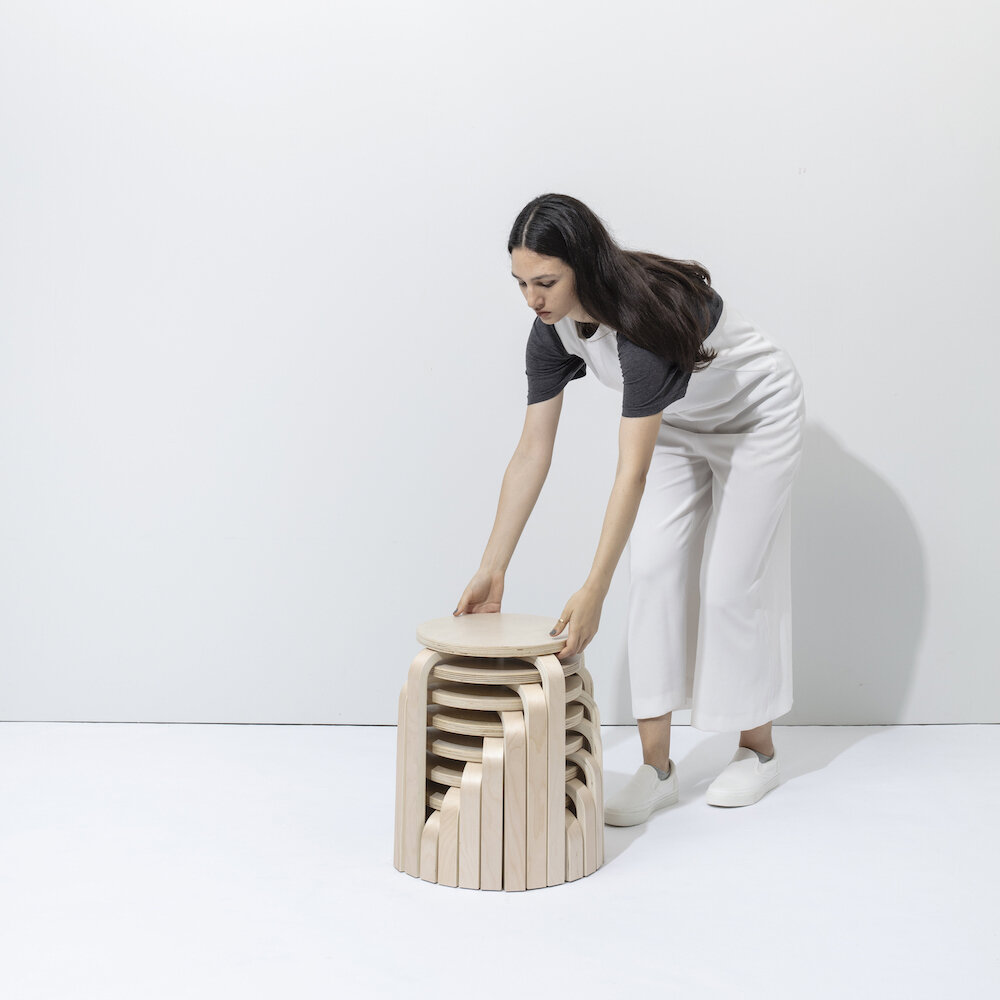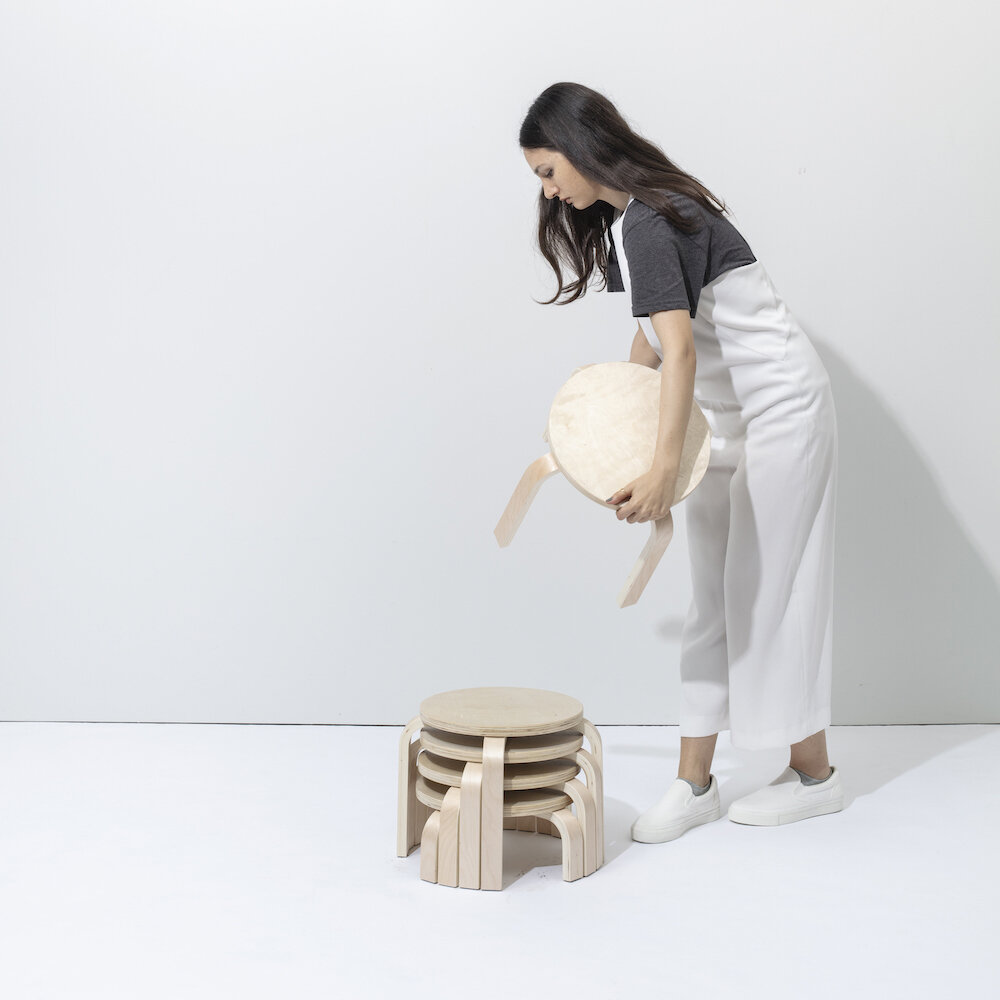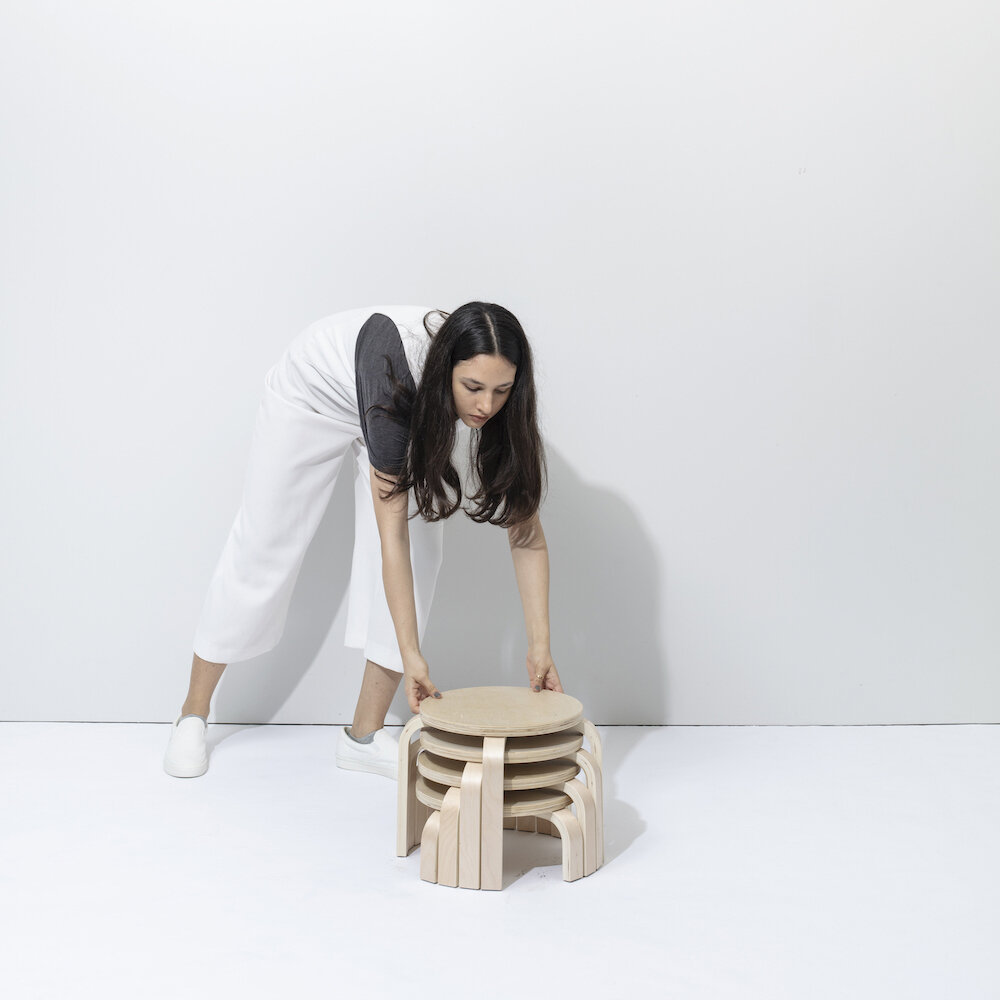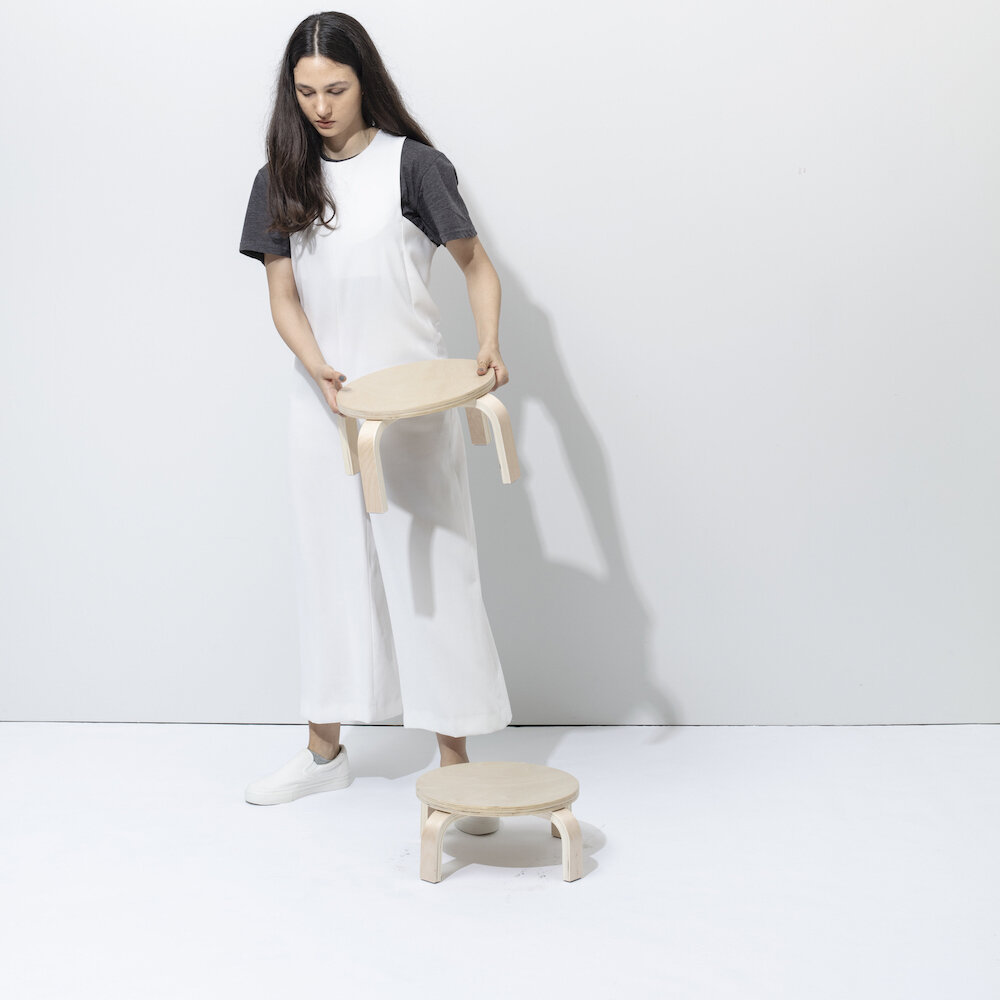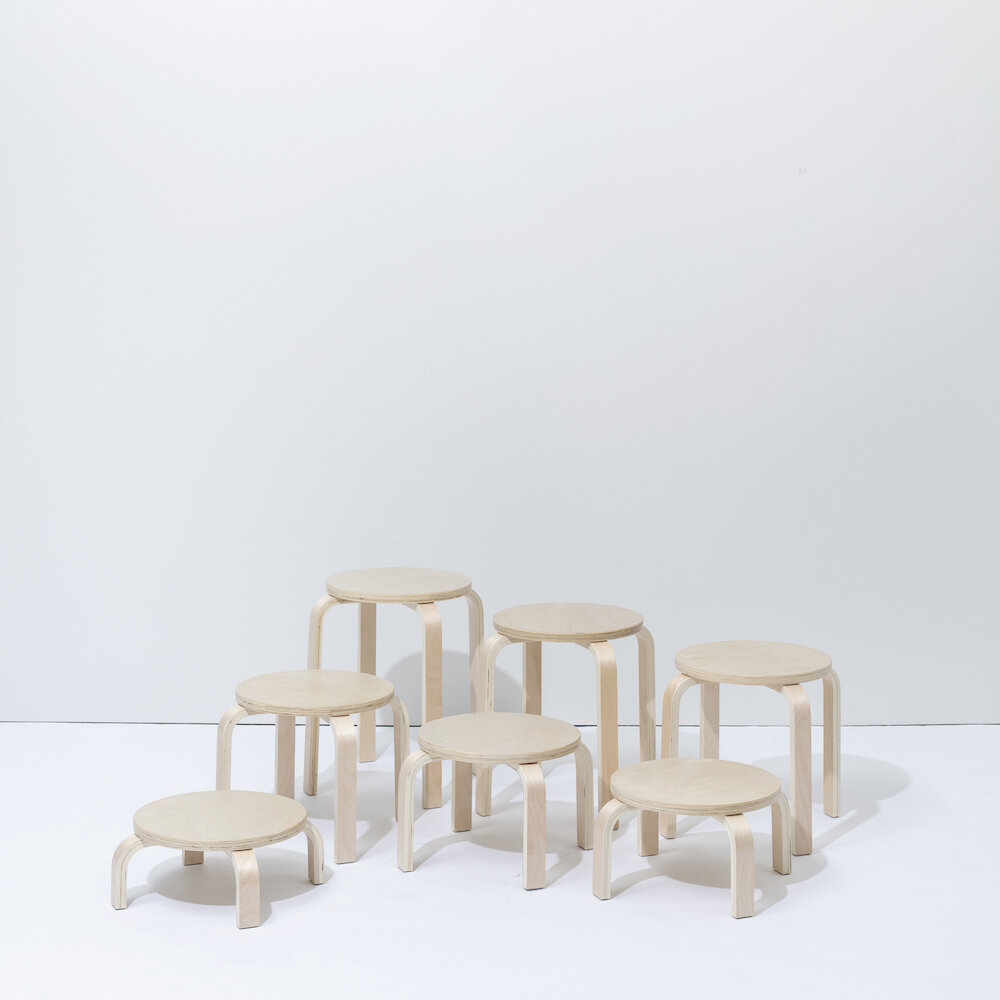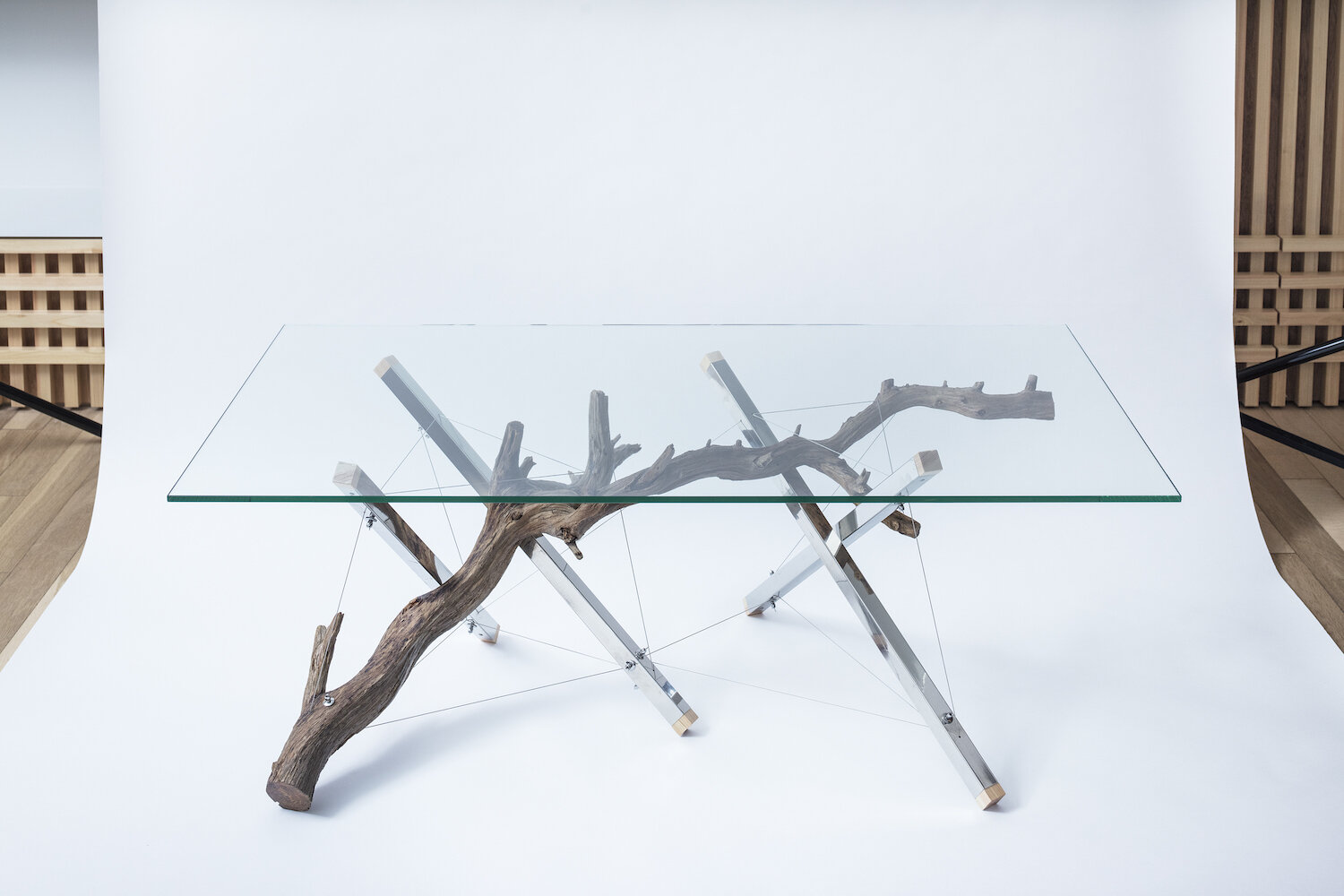Interview with DAISUKE MOTOGI | DDAA/DDAA LAB —part 2
I find it very interesting that “changing the frame” transforms the way it looks
— Daisuke Motogi, DDAA/DDAA LAB
photography : Kenta Hasegawa
words : Reiji Yamakura/IDREIT
This is the second interview with architect Daisuke Motogi, who is leading the Tokyo-based design studio DDAA and the research organization DDAA LAB. The Hackability of The Stool, a research project to modify the famous STOOL60 chair introduced in our first post ‘Interview with DAISUKE MOTOGI —part 1’, completed its 100th release on Instagram (www.instagram.com/daisukemotogi) in October. After that, he published his first book called “Kufu-no-renzoku: Strange DIY Manual”. This time, we asked him about the design of his recently released ‘Strange Tensegrity Table 3’, etc.
‘ROCKING STOOL’ from Hackability of The Stool.
They combined basket and stool for the idea named ‘CAT BASKET’.
— We really enjoyed looking at ‘Hackability of The Stool’ ideas every day. In the second half, there were many unique ideas such as rocking stools and baskets for cats. How were the reactions of viewers?
Since we published it on SNS, it was enjoyable to get direct responses. For the idea of a small stool inside a single stool like a matryoshka, some people said that they wanted to use it in kindergartens. Also, Artek, the manufacturer of STOOL 60, got interested in the idea and we might be able to do something together in the future.
The idea ‘MATRYOSHKA’ is to stack as many stools as possible in one stool, just like the traditional Russian toy, Matryoshka. They have stacked seven stools.
‘SOFT TOY’ was inspired by the idea of a plushy. It is fun to see that some of the 100 ideas are free from the function of sitting.
— That’s nice. About this project, I was really impressed by the freedom of your ideas and that you paid attention to how the designer, Aalto, thought when developing L-leg.
The beauty of STOOL 60 is its complete design, and I heard that the basic manufacturing method of it has been almost the same since the 1930s, except during the war. When developing STOOL 60, Aalto was trying to use the L-leg system to design not only stools but also everything in our daily lives, from storage furniture to prefabricated houses. I believe that at the root of this concept was the modernist idea of raising the standard of living for everyone by supplying products at low cost through mass production. Aalto once said, “If architecture is to be standardized, it should not be mass-produced and standardized like automobiles, we should create change and richness that adapts to our lives.” By exploring new ways of using the STOOL 60 as a material instead of considering it as a complete stool, we presented the potential of the L-leg again and conducted research that would lead to the ideal that Aalto had in mind.
The 100 ideas of “Hackability of The Stool”. They are currently planning an exhibition in Tokyo to show all 100 pieces.
— Will there be an opportunity to see the actual 100 stools in the future?
We are planning an exhibition to show all the 100 stools at an exhibition space in Tokyo. Stools will also be shown at the Venice Design Biennial, which has been postponed from May this year to June next year. I am also working on a book based on Hackability- with a publisher Kenchiku-no-kenchiku for a release in the spring of 2021.
— I'm looking forward to all of them. This project was also explained in your book. This is a fun and very different book from so-called monographs of architects.
A new book written by Daisuke Motoki, “Kufu-no-renzoku: Strange DIY Manual” released by Shobunsha in 2020.
In this book, I wrote about the products and spaces I had designed so far, including how to make them and the materials used. With the similar background of the stool modification project, I regard everything in the world as a material, and I am always looking for ways to improve things from familiar ones to big matters. When I look at an object from that perspective, I can see that everything in the world can be modified. Modernism was based on the idea of homogenizing the world to improve the quality of life, and this approach was very successful. However, because of its success, mass-produced goods were flooded into the world, and I believe that the sceneries of all areas became uniform and a bit boring. In order to overcome this situation, I think we should not fight against it with the opposite concept like Post-Modernism, but rather shift our perspective a little and look for room for further improvement. This book is a DIY manual of ideas for changing the current situation based on these thoughts.
— In your book, it is easy to understand with the diagrams of how to assemble it. Finally, can you please tell us about the concept of the new ‘Strange Tensegrity Table 3’?
DDAA LAB has designed ‘Strange Tensegrity Table 3’ as a spontaneous project.
We designed the first piece of this series, Strange Tensegrity Table, when we were asked to organize the venue for the exhibition ‘Experimental Creation’ in 2017. Arakawa Grip, the sponsor of the exhibition, provided us with wires and joints, so I initially considered a hanging structure. Yet, we didn't want the table to stand out too much, so we decided to use a tensegrity system to create a design where something strange is happening only underneath the table.
Their first ‘Strange Tensegrity Table’ was created with inexpensive brooms for legs. (photography: DDAA)
Since tensegrity is a bit too much of an engineering approach, I thought it would be interesting to make the design more relaxed, so I decided to use uncool everyday objects. I like the Readymades of Marcel Duchamp and artist Motohiro Tomii's works that uses everyday objects, and that influenced me to look for a hammer as a material for the legs. However, I thought something cheaper would be more suitable for this table, so I finally chose a broom available at a 1-dollar store.
‘Strange Tensegrity Table 2’ (2018), a low table designed for one second home.
— The second work, Strange ‘Tensegrity Table 2’, is a combination of tree branches and polished metal legs.
We created it when we designed the interior of a second house. The client asked for a desk made of a single piece of solid wood. we proposed one solid wood dining table and another design using this branch. Tensegrity is a method that can be used to create large structures, so it was helpful that we had continued our research after our first Strange Tensegrity Table.
— I see. From there, you made a further leap and came up with ‘Strange Tensegrity Table 3’. Is this work for your client?
No, it was made a spontaneous project of our DDAA LAB. The usual tensegrity structure consists of three vertical and three horizontal elements, but here we tried a strange structure with one less horizontal member. This design was the result of millimeter-by-millimeter verification with the help of an architect Mr Toshikatsu Kiuchi.
They used a branch called ‘Shareboku’ as one of the horizontal elements for the Strange Tensegrity Table3.
— It is a table but has a presence like art.
Yes. I thought it would be an object of appreciation since there is only one branch floating. This tree branch has the effect like being displayed in a picture frame. In the past, I used to “play” with decorating daily necessities in large frames hanging on the wall in my office, and I found it interesting to put in something as plain as a plastic umbrella. In psychology, there is a word called framing, and I find it very interesting that changing the frame of an everyday object, like putting it in a picture frame, transforms the way it looks. We are currently working on a hotel interior and products designed based on the same idea, so please look forward to it.
Motogi says of the DDAA LAB's research activities, “Spontaneous projects will have an effect on various designs later on”. The unique style of DDAA/DDAA LAB, which incorporates the approach of prototyping and disseminating their own ideas as part of the design office in the ever-changing situation during the spread of COVID-19, has become a source of unique ideas, and we can't take our eyes off Motogi's future projects.
DAISUKE MOTOGI
Born in 1981. After graduating from Musashino Art University in 2004, he joined to Schemata Architects. Founded DDAA, a design firm that works with multi-disciplinary projects based on architectural thinking. Established DDAA LAB for experimental design and research in 2019. He will participate in the Japan Pavilion at the 17th International Architecture Exhibition -Venice Biennale- in 2021.





